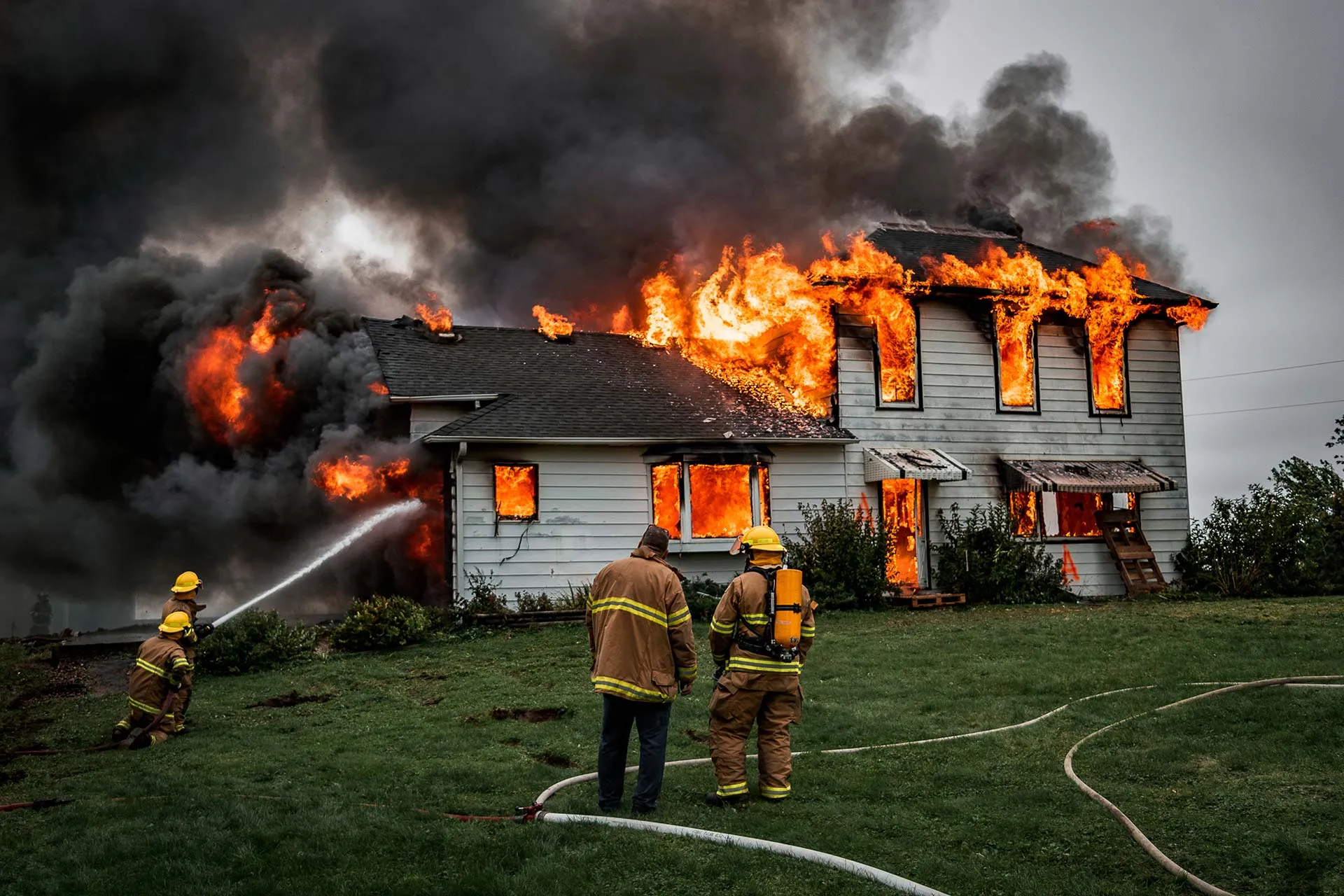Wildfires pose a significant risk to homes and businesses in Battle Ground, WA. The area’s dry summers, strong winds, and dense vegetation create conditions where fires can spread rapidly. Proper fire mitigation strategies can help reduce the threat, protect property, and enhance community safety.
Creating Defensible Space Around Properties
Vegetation Management
- Maintain a 30-foot clearance around structures by removing dry grass, leaves, and flammable debris.
- Trim tree branches at least 10 feet away from buildings and avoid planting trees with high resin content, such as pines and firs.
- Space shrubs and trees to reduce the risk of fire jumping between them.
Fire-Resistant Landscaping
- Use fire-resistant plants like lavender, red maple, and yarrow.
- Install gravel, stone pathways, or non-combustible mulch near structures instead of flammable bark mulch.
- Keep lawns well-watered and trimmed below four inches to slow fire spread.
Structural Protection and Fire-Resistant Materials
Fire-Resistant Roofing and Siding
- Replace wood or shingle roofs with fire-resistant materials like metal, clay, or asphalt composite.
- Use fiber cement, stucco, or brick siding to prevent fire ignition.
Sealing Gaps and Openings
- Install ember-resistant vents to prevent embers from entering attics and crawl spaces.
- Use fire-rated caulking to seal gaps around doors, windows, and siding.
- Ensure decks and porches are made from non-combustible materials or treated wood.
Prestige NW Restoration for Fire Resistance
Proper insulation can make a significant difference in a building’s fire resilience. Prestige NW Restoration helps by:
- Sealing gaps and cracks, preventing ember intrusion.
- Providing thermal resistance, slowing heat penetration.
- Reducing oxygen flow, which can limit fire spread within walls.
Prestige NW Restoration specializes in fire mitigation for homes and businesses in Battle Ground, WA. Our team ensures your property meets the highest fire safety standards. Call us at (360) 334-3624 or email dispatch@prestige-nw.com to learn more.
Community and Emergency Preparedness
Fire-Resistant Community Design
- Encourage the use of fire-resistant building codes in new developments.
- Establish community-wide firebreaks and fuel reduction zones.
- Coordinate with local fire services for annual risk assessments.
Emergency Response Planning
- Develop and practice evacuation plans with family members.
- Keep emergency kits ready with essentials like food, water, and first aid supplies.
- Sign up for local wildfire alerts and stay informed during high-risk seasons.
Fire Suppression and Prevention Systems
Home Fire Sprinkler Systems
- Install automatic fire sprinkler systems to control small fires before they spread.
- Ensure regular maintenance and inspections for optimal performance.
Exterior Water Sources
- Maintain an accessible water supply such as hydrants, wells, or stored water tanks.
- Use irrigation systems or rooftop sprinklers to wet surrounding areas in high-risk situations.
Safe Outdoor Practices to Prevent Fire Ignition
Responsible Fire Pit Use
- Keep fire pits at least 10 feet away from structures and vegetation.
- Always have a water source or fire extinguisher nearby.
- Fully extinguish fires before leaving the area.
Equipment Safety
- Use spark arresters on chainsaws, ATVs, and other outdoor machinery.
- Avoid mowing dry grass on windy days to prevent accidental sparks.
- Store flammable liquids properly in fire-safe containers.
Frequently Asked Questions
What is the best way to protect my home from wildfires?
The best approach is a combination of creating defensible space, using fire-resistant materials, and maintaining emergency preparedness.
How effective is fire mitigation in fire prevention?
Fire mitigation seals gaps, slows heat transfer, and limits oxygen flow, making it an effective barrier against fire spread.
Should I install a fire suppression system in my home?
A fire suppression system, such as sprinklers, can prevent small fires from growing into major threats, increasing safety for residents and property.
What are some fire-resistant plants I can use in my yard?
Fire-resistant plants include red maple, yarrow, lavender, and oak trees, as they retain moisture and resist ignition.
How often should I trim trees and vegetation around my home?
Trim trees at least once a year and maintain defensible space regularly, especially before fire season begins.
Does my home insurance cover wildfire damage?
Coverage varies by provider. Check with your insurance company to ensure your policy includes wildfire protection and mitigation benefits.
How can I stay updated on wildfire risks in Battle Ground, WA?
Sign up for local fire alerts, follow the Washington State Department of Natural Resources, and stay informed through community safety meetings.
What materials should I use for fire-resistant home improvements?
Recommended materials include metal or asphalt roofing, fiber cement siding, tempered glass windows, and composite decking.
Can I do fire mitigation myself, or should I hire a professional?
Homeowners can handle some tasks, like clearing vegetation and using fire-resistant landscaping. However, for structural improvements like insulation and fire-resistant materials, hiring a professional is recommended.
How can I get professional fire mitigation services in Battle Ground, WA?
Contact Prestige NW Restoration at (360) 334-3624 or dispatch@prestige-nw.com for expert fire mitigation solutions tailored to your property.




